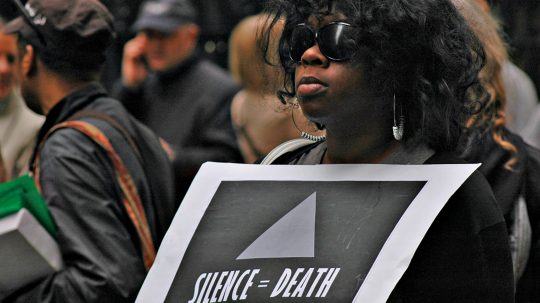It’s 100 years since some British women were given the right to vote. You might think the suffragettes have nothing in common with modern human rights campaigns – but you’d be wrong.
The suffragettes, like popular protest groups today, knew how to use bold images and creative branding to challenge the status quo. In fact, they’d have been a top Twitter trend if they were active today.
The suffragettes was the name given to activists who were members of the Women’s Social and Political Union (WSPU), an organisation established in 1903 by Emmeline Pankhurst to campaign for the vote. They adopted militant tactics such as smashing windows and arson, with many many members serving multiple prison sentences where they were force-fed and denied political prisoner status.
But Why Were Women Denied the Right to Vote?

Image credit: Author’s Personal Collection
Good question! In Britain at the turn of the twentieth century voting was not regarded as a universal right, but as a privilege for the wealthiest men in society. One of the principal arguments against giving women the vote was that politics was “unfeminine” and too intellectually challenging for the “delicate sex.” In one parliamentary debate in 1913, the MP Sir J Compton-Rickett declared:
Whatever may be the qualities of women, and they are great, in constructive intellectual power, they are not the equals of men; they never have been, and never will be.
Newspapers that opposed the idea of women having the vote published cartoons such as the one above. Suffragettes, they said, were just bitter old women incapable of finding a husband. Attractive, feminine women (so these papers claimed) had no interest in the right to vote. They were happy to stay in their “natural” domestic realm and support the political status quo.
So How Did the Suffragettes Challenge Traditional Ideas of “Femininity”?

Image credit: Author’s Personal Collection
One of the main symbols used by the suffragettes was “the female hero.” The “hero” is traditionally regarded as the ideal man, a strong leader who is clearly capable of voting. The suffragettes repackaged this symbol of manliness and created a female version. She was courageous and rebellious but also beautiful and pure.
The WSPU leaders declared that they wanted to make “the heart of every woman in the movement to be the heart of a hero and a warrior.” One of the leaders, Emmeline Pethick-Lawrence, referred to the struggle for the vote as a “crusade” in which every member had to:
Take up arms and wage this holy war for freedom… we must take up the sword that is never to rest in sheath again till the soul of womanhood is released.
The WSPU magazines regularly included articles on female heroism, both historic and present-day. One series was entitled “Warrior Women” and included the Amazons. The female hero most often admired was Joan of Arc, featured above on the front of the WSPU magazine. Some suffragettes even led demonstrations on horseback, dressed as Joan of Arc.
When the Titanic sank in 1912, the WSPU emphasised that it wasn’t just men who’d been heroic. Female passengers had also insisted that others were saved first, showing how: “The chivalry of man towards woman is no less beautiful a thing than the chivalry of woman towards man.”

Image credit: Johnny Cyprus / Wikimedia Commons
The WSPU heroic identity was also created through visual branding. Suffragettes who’d spent time in prison were given medals “For Valour”, reinforcing the idea that the women were soldiers being decorated for their service.
There was a “full dress uniform” of white, green and purple which members were encouraged to wear (purple symbolised dignity, white purity and green hope). The emphasis was always on looking fashionable and attractive to show that political women were not actually dowdy spinsters.
Creative Branding Can Shift Views of Discriminated Groups!

Image Credit: Author’s Private Collection
Although they were campaigning more than 100 years ago, the suffragettes knew how to use symbols to disrupt stereotypes about femininity, stereotypes that justified the denial of women’s right to vote. The WSPU created a powerful brand of female heroism – and disrupted the status quo with swagger.
Modern human rights campaigns employ similar strategies. Emblems and powerful narratives are often the life-blood of these campaigns, used to shift ideas about groups facing discrimination. See, for example, the I am an Immigrant campaign, the symbolism behind the name “Pussy Riot” and the Black Lives Matter brand. As one Black Lives Matter activist has explained, symbols are an important way of making sure that the injustices exposed by campaign groups are “able to seep into the public consciousness so that our ideas become common sense as opposed to outlying ideas.”
Thankfully, on 6 February 1918, granting women the right to vote was accepted as common sense. Let’s hope modern human rights campaigns have similar success.







